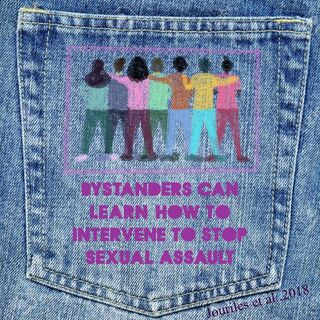Sexual Abuse
How Common Is Sexual Violence in the United States?
3 take-aways from a new report can guide action.
Posted July 18, 2022 Reviewed by Michelle Quirk
Key points
- Sexual violence is common and often perpetrated by people known to victims and survivors.
- Sexual violence is linked with a range of short- and long-term problems, such as health and academic difficulties.
- Research points to prevention and early intervention strategies that can make a difference.
Recent news stories paint a dizzying picture of sexual assault in the United States. Even as some headlines question whether #MeToo is dead, new investigative reporting showed widespread sexual abuse and harassment of youth in junior R.O.T.C. programs across the United States.
So just what is the state of sexual violence in the United States?
A June 2022 report released by the National Center for Injury Prevention and Control and Centers for Disease Control and Prevention sheds light on the scope of the problem of sexual violence, drawing on data from the National Intimate Partner and Sexual Violence Survey (NISVS). The NISVS is an ongoing survey of adults in the United States. The most recent report draws on data collected between 2016 and 2017 via a phone survey of more than 27,000 women and men.
Here are three takeaways from the 2022 NISVS report to guide action going forward.
1. Sexual Violence and Harassment Are Common
One in four women reported attempted or completed rape in her lifetime, according to the 2022 report. This translates to more than 29 million women in the United States and is up from prior NISVS data, in which one in five women reported rape or attempted rape (2015 and 2010–2012).
Half of women surveyed reported an unwanted sexual experience other than rape, such as being groped, grabbed, or fondled. Nearly one-third of women reported being sexually harassed in public places.
Men were also victims of sexual violence: A quarter of men surveyed reported unwanted sexual experiences and 4 percent reported attempted or completed rape.
Adding to the NISVS report’s focus on binary gender categories, other research points to nonbinary and transgender people being at even higher risk of being sexually victimized than cisgender people.
2. Sexual Violence Starts Early
For a majority of women and men who are sexually victimized in the United States, rape is common early in their lives. Among women, for example, the report documented that 80 percent reported that their first rape victimization was before the age of 25, and about half reported the rape occurred before age 18. This finding supports other research documenting that forced sex is common in girls’ first sexual encounters in the United States, with health consequences that stretch into adulthood.
3. Sexual Violence Is Most Often Perpetrated by People Known to Victims
According to the NISVS, sexual violence is most frequently perpetrated by people known to victims—their intimate partners, acquaintances, family, and people in positions of power in their lives. Looking specifically at rape, intimate partners and acquaintances were the most common perpetrators for both women and men. These findings are consistent with decades of research showing that, despite common rape myths, perpetrators are most often people known and trusted by victims.
Connecting the Survey Findings to Research on Harm
The NSIVS offers a tool for surveilling rates of sexual violence in the United States. This year’s report shows that the occurrence of sexual violence remains a persistent and serious problem. In turn, decades of research demonstrate that sexual assault is linked with harms that are both immediate—such as unintended pregnancy, sexually transmitted infections, and posttraumatic stress disorder (PTSD) symptoms—and long-term. For example, sexual violence can have consequences for academic success and careers, psychological and physical health, and criminal legal system involvement.

In light of evidence that sexual violence is common and linked with far-ranging harms, preventing intimate violence from happening in the first place is of paramount importance. Fortunately, there is promising evidence that adolescent-focused programs can change attitudes, knowledge, and behavior related to dating violence. College bystander interventions can also make a difference in preparing young people to intervene to stop sexual violence.
When prevention fails, early intervention to support the health, well-being, and autonomous decision-making of survivors is essential. For example, early psychological interventions after sexual assault are promising for reducing the severity of PTSD. Meanwhile, some survivors may want to engage with the criminal legal system, and others may not. Supporting survivors’ autonomous decision-making about reporting sexual assault means ensuring they have access to victim advocacy and information about their options.
Bringing prevention and early intervention to our communities will take resources, of course. Advocating for resources to prevent sexual violence and respond effectively when it does occur is in all of our self-interests. After all, as I documented in Every 90 Seconds: Our Common Cause Ending Violence Against Women, sexual assault and its impacts diminish individuals and our communities. The NSIVS and the day’s headlines remind us that sexual violence remains incredibly common—and we have a stake in applying research to address this persistent problem.




